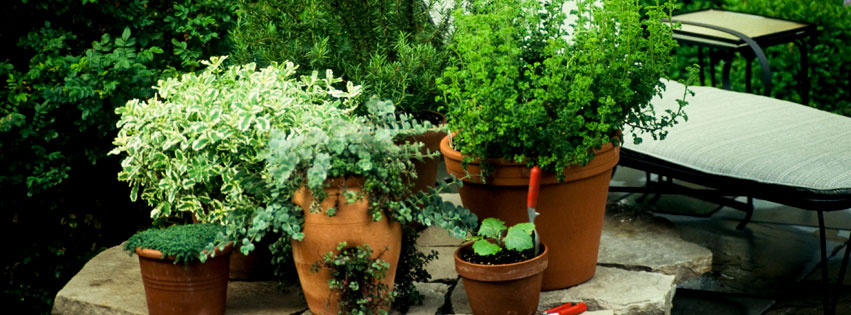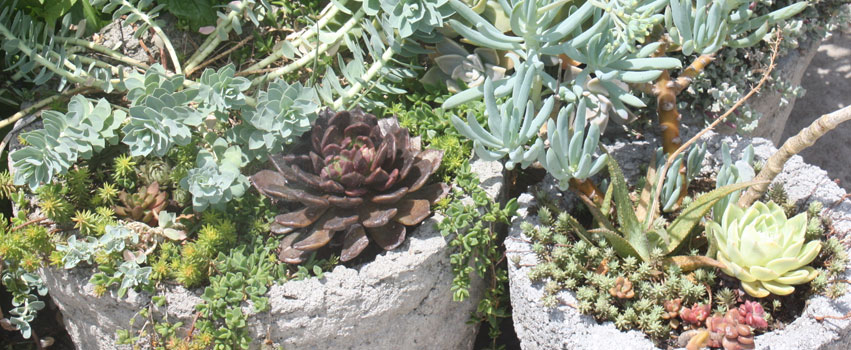Container gardening will add a splash of interest to any patio or front door, but it also brings some exciting diversity and seasonal interest to any garden, large or small. With just a few basic tips and design considerations, success with containers is accessible to everyone.
The Three Necessities
Great container gardens require good soil, adequate water and proper fertilization. Always use bagged potting soil designed for containers and enriched with fertilizer—never use soil from a backyard. To limit the spread of disease, I replace potting soil before replanting each spring. This can be expensive, however, so I only replace the top 12 inches in larger containers.
Containers and planters will always dry faster than traditional planting beds, so watering is very important. Keep in mind that watering needs can vary greatly depending on your plant selection, container placement (sun or shade) and weather. In full sun, you may have to water every day, while a shaded container may demand water just once or twice a week. You can test the soil at a 1-2” depth with your finger and it should feel moist, but not wet.
That said, make sure your container has drainage holes to drain excess water. (If not, a cordless drill will solve the problem.) Even with fertilizer-enriched potting soil, feeding is essential because frequent watering leaches nutrients from the soil. When planting, incorporate a granular slow-release or organic fertilizer, as per instructions. In addition, fertilize every two weeks with a water-soluble fertilizer as directed.
Container Placement
I recommend flaunting your efforts by using the containers as a focal point, placing them where they are highly visible: on a path, patio or next to the front door. You can add additional drama by clustering multiple containers. This lends itself to single-specimen containers of begonia, coleus or succulents, which can be shuffled to create new combinations. Because of the tight physical placement, these clustered containers are easily watered and maintained.

Design Considerations
Once you have determined where your containers will be located, use the right plants in the right place, selecting plants best-suited for the conditions. In full sun, you can use petunia, geranium, sedum, succulents or salvia, while begonia, caladium, impatiens or coleus are a better fit for shade. Here are some additional tips:
- For a showy presence with a combination of plants, try to include a thriller (tall, upright plant for drama), fillers (midsized, stout plants to fill the container) and spillers (plants that spill over the edge).
- Floral interest and color are important, but it shouldn’t be all about flowers. Using texture and contrasting foliage (grasses, succulents, etc.) will produce some amazing container gardens.
- Consider a four-season container to expand seasonal interest. The options are unlimited for the summer, but you can incorporate pansies, mums and ornamental cabbage for the spring and fall. Winter containers can include evergreen boughs tucked into the soil, along with colorful dogwood branches, dried grasses or even dried hydrangea flowers.
- Add an extra serving of fruits, vegetables and herbs by creating edible container gardens. We have a sunny area on our patio, not far from the kitchen, reserved for a collection of different basils and peppers.
Don’t be intimidated—container gardening is accessible to everyone! Get started this spring and enjoy yours all year long. PM
Bob Streitmatter is the manager of Luthy Botanical Garden, a Peoria Park District facility located at 2520 N. Prospect Road near the Peoria Zoo.




